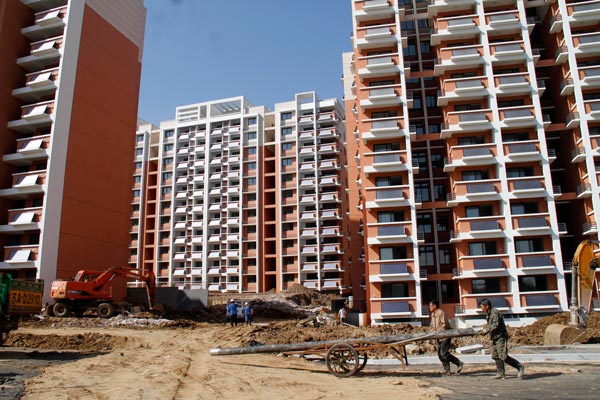 |
|
A property construction site in Nanjing, capital of Jiangsu province. [Photo/China Daily] |
Shandong Gaishi Group, which runs the province's largest road cargo network, deals with over 12,000 vehicle shipment daily, with a total volume of 50,000 metric tons. To add its capacity, it last year borrowed loans that would require an annual interest payment of 30 million yuan($4.6 million). Under China's value-added tax reform, which was to replace business tax in the service sectors with VAT to avoid repeated taxation, Gaishi's interest payment eligible for deduction alone would save the company 1.7 million yuan of tax payment.
"The 1.7 million yuan could be used to buy 10 vehicles to expand our capacity. Without the VAT tax reform, we would have to think again whether to borrow," said Chai Shanshan, a tax planning director of the group.
The case illustrates the economic rationale behind policymakers' effort to cut corporate tax: less tax burden would free up more enterprises' earnings, thus inspire them to use that for capital expenditure. The rise in investment would offer a larger base to tax.
"It is a trade-off between short-term tax losses and long-term gain," said Liu Shangxi, director of the Fiscal Sciences Research Institute under Ministry of Finance. "In the long run it is also beneficial to the foster of new economic engines, upgrade of industries and consumption upgrading."
For now, the most talked about, and most feasible tax cut plan, is the VAT reform. Starting in 2012, the reform has so far expanded to all service sectors, such as transportation and telecommunication, which had in total saved 593.9 billion yuan of tax until the end of Nov, according to State Administration of Taxation (SAT).
